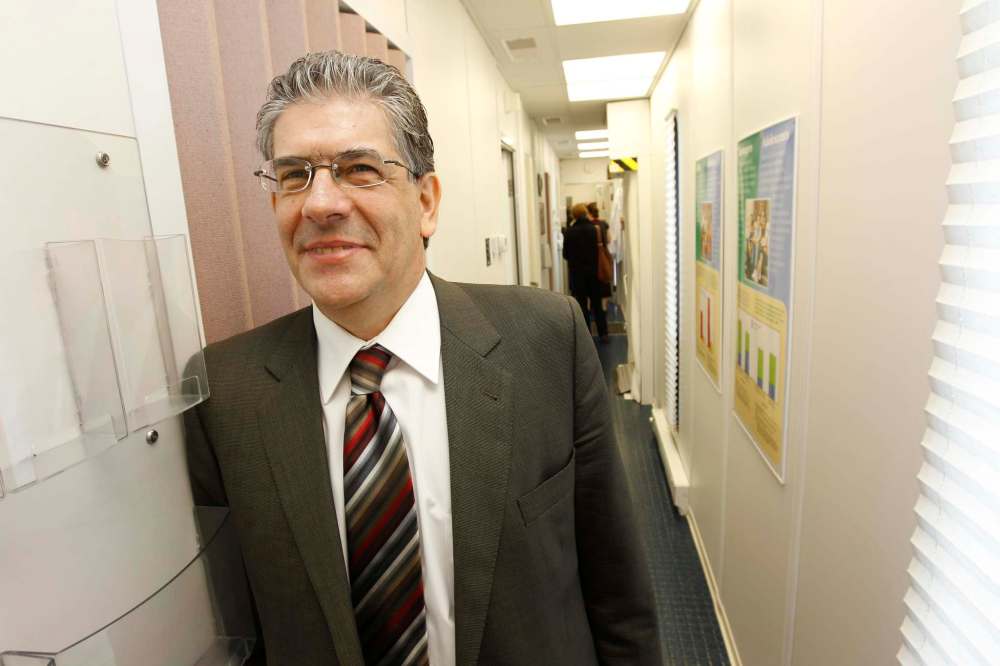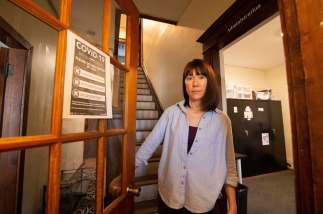Detail the danger, public will comply: former public health chief
Read this article for free:
or
Already have an account? Log in here »
To continue reading, please subscribe:
Monthly Digital Subscription
$0 for the first 4 weeks*
- Enjoy unlimited reading on winnipegfreepress.com
- Read the E-Edition, our digital replica newspaper
- Access News Break, our award-winning app
- Play interactive puzzles
*No charge for 4 weeks then price increases to the regular rate of $19.00 plus GST every four weeks. Offer available to new and qualified returning subscribers only. Cancel any time.
Monthly Digital Subscription
$4.75/week*
- Enjoy unlimited reading on winnipegfreepress.com
- Read the E-Edition, our digital replica newspaper
- Access News Break, our award-winning app
- Play interactive puzzles
*Billed as $19 plus GST every four weeks. Cancel any time.
To continue reading, please subscribe:
Add Free Press access to your Brandon Sun subscription for only an additional
$1 for the first 4 weeks*
*Your next subscription payment will increase by $1.00 and you will be charged $16.99 plus GST for four weeks. After four weeks, your payment will increase to $23.99 plus GST every four weeks.
Read unlimited articles for free today:
or
Already have an account? Log in here »
Hey there, time traveller!
This article was published 24/03/2020 (2093 days ago), so information in it may no longer be current.
The tracking of COVID-19 has left Manitoba in a seemingly enviable position compared to what is happening to the east, west, and directly south of the province.
As Manitoba continues to flatten the curve for the time being, the province’s former chief public health officer says we could further prevent the spread of the novel coronavirus by being more specific about the danger it poses.
Dr. Joel Kettner said Tuesday he hasn’t seen any such projections, but it’s likely Premier Brian Pallister has been informed of various scenarios.

Such information would have led to decisions to introduce significant social-distancing measures and the imposition of a state of emergency in Manitoba, he said.
“Without trust, I think it’s going to be hard to get people to sustain these sorts of limitations and disruptions to their lives,” Kettner said. “It’s not just inconvenience. It’s losing money, losing jobs. It’s not being able to visit your loved ones… This is having an enormous impact on people.”
He added it would be valuable for the government to state as specifically as it can what the province is up against, and how the strategies it is employing can make a difference.
On Tuesday, the province recorded its 21st case (presumptive and confirmed) of the coronavirus: a Winnipeg man in his 40s. Officials were still determining whether the case is travel-related.
Manitoba’s case numbers have so far been low compared to other jurisdictions. As of Tuesday afternoon, there were 72 confirmed cases in Saskatchewan, 588 in Ontario, and 34 in North Dakota.
The number is not a signal for Manitobans to let their guard down, said Pallister, who has been briefed on “realistic scenarios” of how hard COVID-19 could hit the province. He would not share such details Tuesday.
“I would not want our low case numbers right now to be used as an excuse by anyone to ignore the physical distancing advice,” the premier said via teleconference. “To do that is a mistake. To protect yourself and to protect those around you is our first and primary obligation.”
Officials say it’s difficult to know for sure why a province, such as Saskatchewan, has significantly more cases than Manitoba, despite their similar population and geographic size. One possible factor is Saskatchewan’s proximity to Alberta, where community transmission has occurred; another factor may be testing criteria varying from one jurisdiction to another.
Manitoba’s coronavirus cases have thus far been linked to travel, but it will experience community transmission of the virus eventually, chief provincial public health officer Dr. Brent Roussin said Tuesday.
The province’s first three COVID-19 cases were reported March 12: two men in their 30s and a woman in her 40s. All were travel-related and required to self-isolate and monitor their symptoms.
“So in the jurisdictions that were first hit with cases — B.C. and Ontario — their first weeks looked exactly like ours. (The cases were) all international travel, imported,” said Roussin. “As you get more and more introduction of the virus into your jurisdiction, then the more likely it becomes that community transmission will occur.”
However, it doesn’t mean the same exponential rise in the number of cases is inevitable, Roussin said. “We are not helpless. We have measures in place right now that are going to limit the effects on Manitobans.”
Earlier Tuesday, Dr. Theresa Tam, Canada’s chief public health officer, said half of all the country’s transmissions are now community-based.
Assistant Prof. Jason Kindrachuk, with the University of Manitoba’s laboratory of emerging and re-emerging viruses, said the province had time on its side and used it to take the threat seriously.
“We kind of have this in our hands right now, if we can follow through with these measures and get through,” he said in an interview. “In Manitoba and here in Winnipeg — and in Niverville, where I live — people have really taken this idea of social and physical distancing very seriously.
“We’re doing the right things we need to do, but we need to keep doing this and find other ways to do even more to help curb the spread of the virus.”
Roussin warned “snowbirds” returning to the province after spending the winter in warm countries to self-isolate for 14 days, and not to go out visiting, grocery shopping or running errands once they get home.
Once there is evidence of community transmission in Manitoba, expect social-distancing rules to tighten, Roussin said.
Testing will need to increase, too, he said, as the Cadham Provincial Laboratory deals with a backlog and prioritizes tests for health-care workers, those in hospital, as well as First Nations. The lab ran close to 300 tests Monday, and is expected to increase that number by the end of the week.
“Testing is important, but it is only one piece of our overall strategy,” said Roussin. “If you are sick and you stay home, whether you’re tested or not, you are not going to transmit a virus.”
carol.sanders@freepress.mb.ca
larry.kusch@freepress.mb.ca


Our newsroom depends on a growing audience of readers to power our journalism. If you are not a paid reader, please consider becoming a subscriber.
Our newsroom depends on its audience of readers to power our journalism. Thank you for your support.
History
Updated on Wednesday, March 25, 2020 3:23 PM CDT: Typo fixed.







